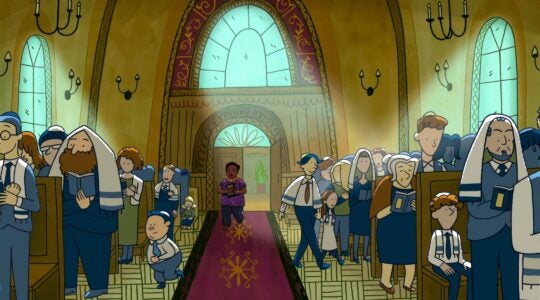I received a call several weeks ago from the exec of a mid-sized Jewish federation asking for my thoughts on a growing problem in his community: the local, independent Jewish newspaper is in financial meltdown and cannot go on as is.
“How can we help?” he wanted to know, recognizing the key role the paper has played in the community for decades.
I was saddened but not surprised by the call. Jewish media groups around the country — including this one — are facing the triple whammy of a weak economy, an aging audience and a next generation that is less interested in Jewish organizational life and used to getting news for free online.
I told the exec he was not alone, and credited him for seeking ways to help out. I wish more like him would be thinking about the prospects and consequences of a Jewish community — local or national — without a media vehicle to unite and inform its constituents across the religious, political and social barriers that too often divide them.
There aren’t any simple solutions, and the scope of the difficulties varies from city to city, from newspaper to newspaper. But the basic concerns about the future of Jewish media in this country are real, and not going away. I suspect, though, that most local federations, communal organizations and philanthropists are not focusing on the issue or thinking about the value Jewish newspapers can, and often do, add to the cohesiveness and vitality of a community.
That’s why Ami Eden, editor and CEO of JTA: The Global News Service of the Jewish People, and I advocated for a session at the upcoming annual General Assembly of the Jewish Federations of North America devoted to the subject. And we are gratified that the powers that be agreed.
The session, entitled “How Jewish Media Can Help Build Community,” will be held this Tuesday, Nov. 13, at the annual three-day conference of the federation movement, in Baltimore this year, and I invite GA delegates to attend. (According to the schedule, there are “only” 11 concurrent sessions competing with ours.)
Ami and I will be joined by Andrew Silow-Carroll, editor of the New Jersey Jewish News, and Esther Kustanowitz, a Los Angeles-based writer and consultant specializing in social media, pop culture, Jewish community and innovation. (She used to write a singles column for The Jewish Week.)
We hope to discuss how the relationship — often described as “love-hate” — between the organized Jewish community and the local Jewish newspaper can be elevated to a higher and mutually beneficial level, even if there is natural tension between them.
These publications (and their websites, of course) should be doing their job, reporting on local successes and challenges, and educating and entertaining readers — helping to keep them connected to each other and to Jewish life. And communal institutions should be thinking about how best to respond when the newspapers face economic hardships and social media replaces hard news.
It’s not just about an infusion of funding that’s required. It’s about creative, strategic thinking in ways that highlight the power of Jewish journalism to connect, enlighten and strengthen community at a time of increasing polarization.
I was reminded this past week of the essential role a Jewish newspaper serves as our staff worked valiantly to produce an edition despite the hardship created by Hurricane Sandy.
One staff writer, anticipating that his neighborhood would lose power, came into our Times Square office last Sunday afternoon and didn’t leave until the issue had gone to press late Wednesday. He and his colleagues gathered and disseminated information around the clock, and several staffers walked for miles, and hours, to get to work.
Subscribers may have noticed that the issue, dated Nov. 2, looked a bit odd. That’s because the printing facility we normally use (at the Daily News’ plant) was flooded and so the issue had to be printed elsewhere (at The Newark Star-Ledger). As a result, the size of the paper was shorter and wider than usual, the font sizes were different, the photo images were wider than normal and there was less color throughout the paper.
But it looked beautiful to me, a labor of love that underscored our commitment to serve the community we cover, and are a part of. That’s why, on a good day, this work can seem less like a job and more like a calling.
The New York Jewish Week brings you the stories behind the headlines, keeping you connected to Jewish life in New York. Help sustain the reporting you trust by donating today.





